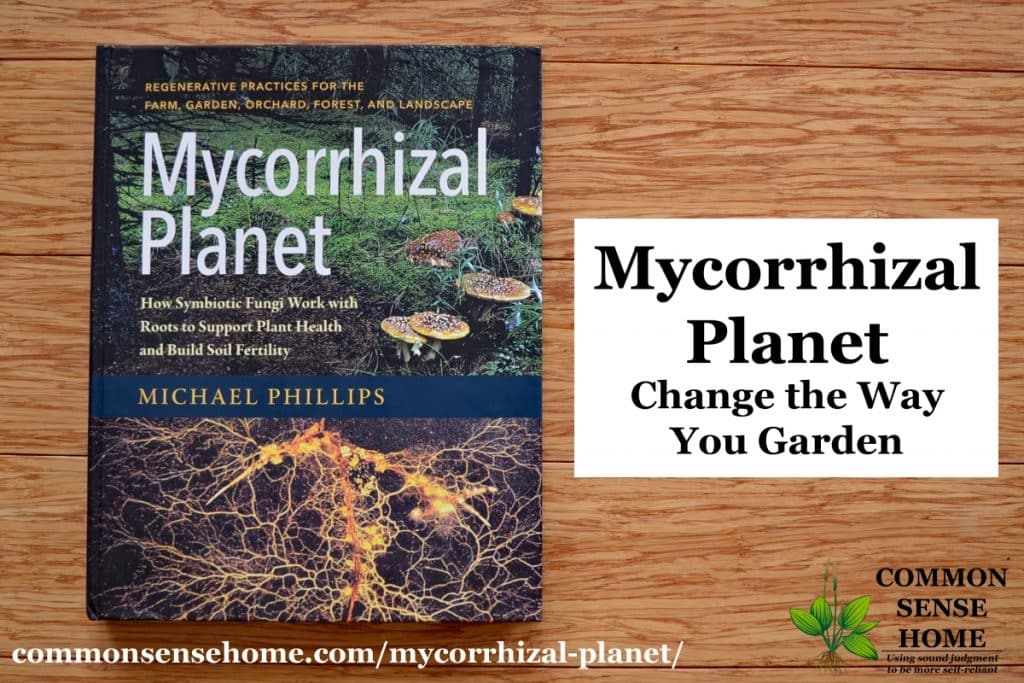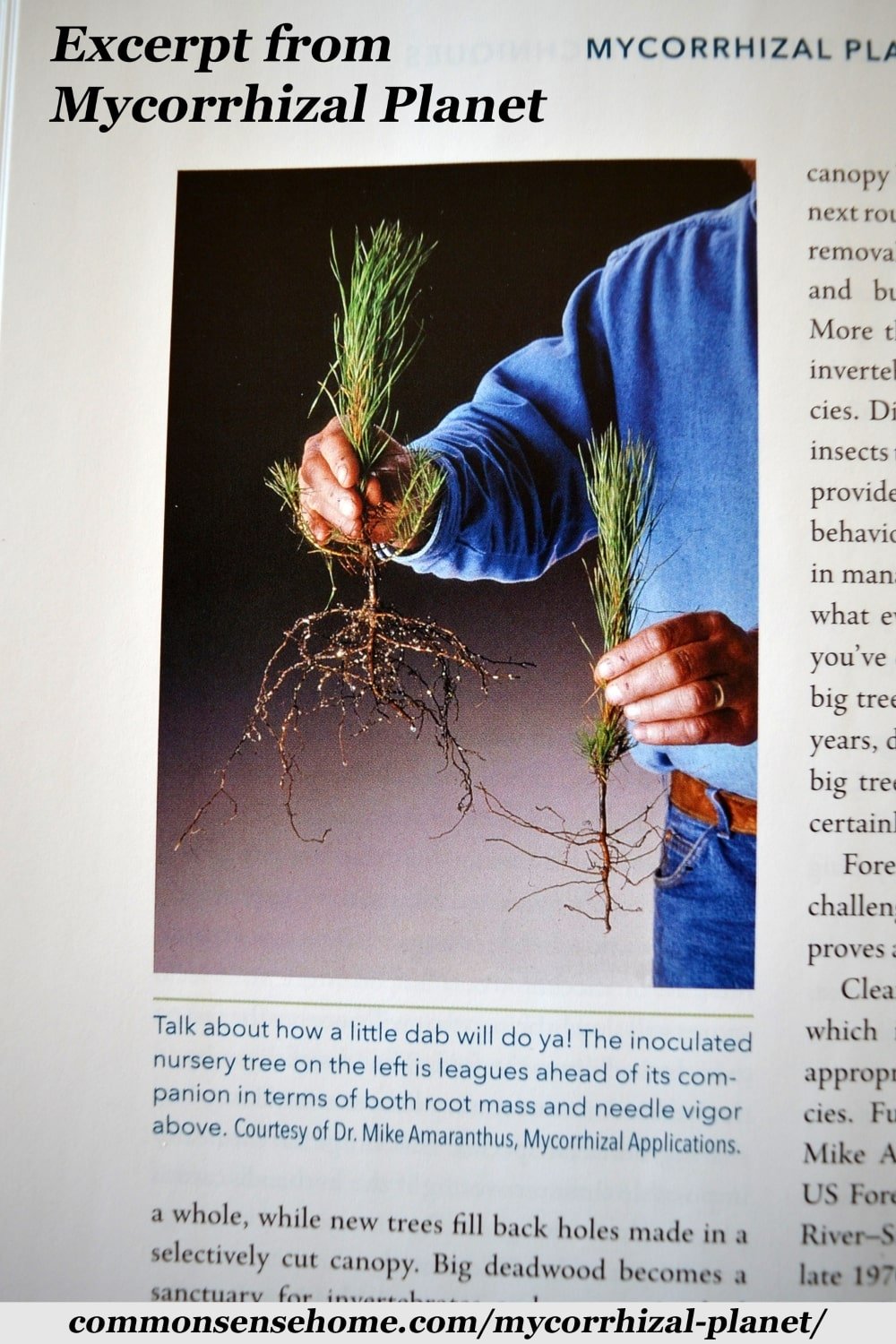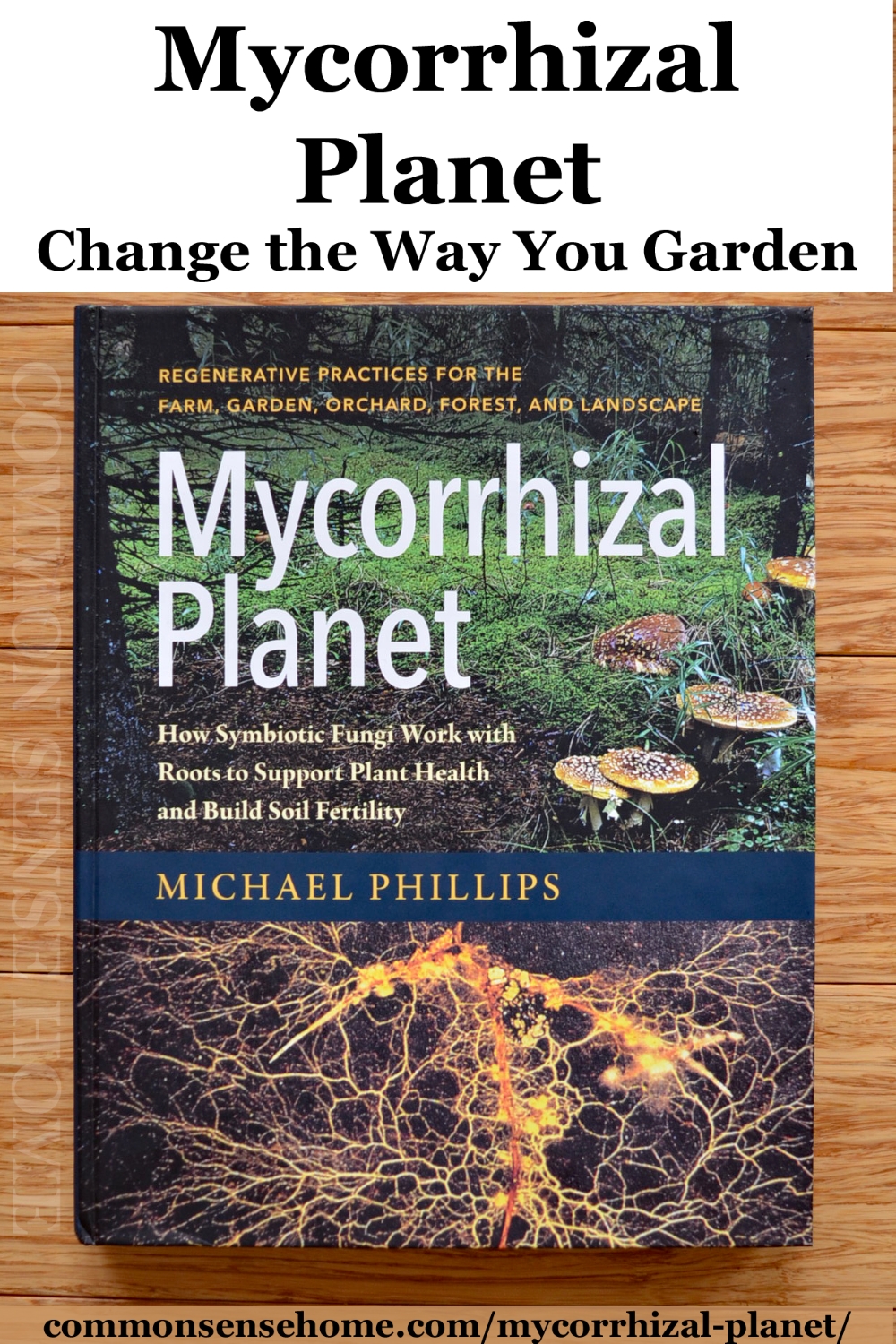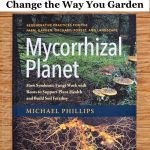Mycorrhizal Planet – Book Review
This post may contain affiliate links. Read my full disclosure here.
“Mycorrhizal Planet – How Symbiotic Fungi Work with Roots to Support Plant Health and Build Fertility” by Michael Phillips provides information that everyone who works with plants should know. The information in this book will radically change the way you look at soil and plant health.

Mycorrhizal Planet shifts the focus from killing insects and fighting disease to building vigorous, thriving ecosystems with plant and fungi partnerships. Strong plants are naturally resistant to attack – and provide more nutrient dense food. Mycorrhizal networks are the glue that holds everything together, partnering with plants and bacteria in ways that are only now becoming better understood. Kill the fungi, and you cut off the plant’s access to more nutrients.
This is particularly troubling, given how many crops are now routinely treated with fungicides. The National Agricultural Statistics Service (NASS) estimated the following for 2009:
Fungicides were the most common type of pesticide used on apples, blueberries and peaches. They were applied to 87 percent of the blueberry acres and 85 percent of the peach and apple acres. Insecticides were applied to 87 percent of apple acres, 84 percent of blueberry acres and 81 percent of peach acres.
The article “Fungicide use surging, largely unmonitored” notes that, “Fungicides were routinely applied on up to 30 percent of the nation’s 220 million acres of corn, soybean and wheat, according to a 2009 estimate.”
Farmers are facing disease pressures, so they spray, or treat the seeds. Nature, being nature, adapts.
We’re now seeing headlines like, “Early blight disease on potato is becoming immune to fungicides“. The CDC quotes, ” Just like some bacterial infections are resistant to antibiotics, some fungi no longer respond to the antifungal medications that are designed to cure them.” I don’t know about you, but I think it’s time for another approach.
Mycorrhizal Planet – Regenerative Practices for the Farm, Garden, Orchard, Forest and Landscape
Chapters in Mycorrhizal Planet are as follows:
- Mycorrhizal Ascendancy – Describes mycorrhizal types, how they partner with plants and how they propagate
- Healthy Plant Metabolism – A more detailed look the plant/fungi partnership, with emphasis on building plant immune systems
- Underground Economy – Establishing and sustaining robust and widespread myco colonies
- Provisioning the Mycorrhizosphere – The conditions and amendments your healthy fungi need to thrive
- Fungal Accrual – How to introduce healthy mycorrhizal fungi and the environments that foster them
- Practical Non-disturbance Techniques – Protecting the fungi in the garden, landscape, orchard, forest and farm
- Edible Mycorrhizal Mushrooms
- Soil Redemption Song
Michael’s passion for his subject is obvious. Like his earlier books, The Apple Grower and The Holistic Orchard, he bases his writings on a combination of experience and intense research. (Remember when late blight devastated tomato crops up and down the eastern seaboard? Michael’s garden sailed through without a problem while his neighbor’s plants fell to the blight.) He provides an exhaustive study of the role of mycorrhizal fungi in plant health, and how we can use this information to our advantage.
He sums up his approach at the end of the book:
Would you like to save this?
One: Promote healthy plant metabolism as the guiding paradigm in growing anything. And two: think and think again about ways to least disturb the soil ecosystem. Our overarching goal needs to be to amplify mycelial connection everywhere.

Take Care of the Fungi and They’ll Take Care of Us
The growth difference for plants with and without fungal support was amazing, but mycorrhizae do more than double the size of a tree. A few of their many benefits include:
- Improving uptake of trace minerals
- Reduced transplant shock
- Improved production
- Suppression of root pathogens
- Reduced fertilizer requirements
- Helping plants to cope with salinity and soil compaction
If your reaction to this book is anything like mine, like me you’ll be working to add more mycorrhizal fungi to your garden and orchard. This book has changed my entire perspective on gardening, giving me encouragement to keep pursuing alternative plant and soil building techniques. The answer to feeding the world is right under our feet.
You may also enjoy:
- Working with Nature – Shifting Paradigms and The Essence of Organic Gardening
- Holzer Permaculture – A Lifetime of Food Growing Innovation
- Restoration Agriculture: Real World Permaculture for Farmers



Wow, I had no idea some plant diseases were becoming resistant to conventional fungicides. Very concerning! The idea of adding mycorrhizal fungi to the soil is fascinating. I’m going to look into it further. Thanks!
Looks like an awesome book. I got some mycorrhizal innoculant for planting some new fruit trees, but only have a vague idea that it’s a good thing to use. It looks like the book can explain it to me. Thanks!
You’re welcome. We just put in 25 balsams on the treeline yesterday and they all got a dose. I’m hoping they’ll take off faster than previous plantings.
I see bags labled “mushroom manure” is this the same ?
No. Mushroom manure is the spent growing medium from commercial mushroom farming. Not a bad thing to add to your garden, but only one strain of fungi (whatever they were growing), and probably not active spores.
I think I want to read this! Thanks for bringing it to my attention.
You’re welcome, Amy.
Thank you for this information. I am excited about experimenting with mycorrhizae to my garden this year. It’s so important not to disturb your garden soil, so these networks can grow strong.
Yes, some sort of soil cover is critical.